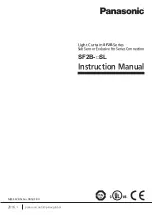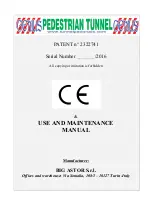
2
Measurement
1. Immerse the electrode in the sample, so that the
uppermost part of the electrode plate is completely
immersed.
2. After immersing the electrode in the sample, lightly stir
the electrode around to optimize the contact area with
the sample and remove any air bubbles.
Note
When measuring pure water or other water having low
conductivity (a few 100
μ
S/m or less), the absorption of
Carbon Dioxide from the air or other external interference
may affect results. In such cases, measurement should take
place under air-tight conditions; or, using a flow-form
conductivity electrode is recommended.
Avoid measuring samples having a viscosity of 0.1 Pa · s
(1P) or more and samples containing large amounts of oils.
The surface of the electrode plate absorbs various kinds of
macromolecular substances (such as proteins and fats).
Wash the electrode carefully, after measuring samples that
contain these substances.
Wash the electrode carefully when measuring a low con-
ductivity sample after measuring a high conductivity sam-
ple.
Then immerse electrode in the low conductivity sample
after making sure that there is no influence of the high con-
ductivity sample.
Maintenance
Wash the electrode carefully using pure (ion exchange)
water, to remove any sample still clinging to the
electrode.
If the electrode is very dirty and cannot be washed
correctly using pure (ion exchange) water, wash it using
the appropriate method below. Then, rinse the electrode
well using pure (ion exchange) water.
A long term-use of the electrode may result in shifts of
the cell constant, due to changes in the surface
condition of the electrode plate. We recommend
measuring the cell constant once every two or three
months. For further details, refer to the Operation
Manual.
General/oily dirt
Immerse the electrode in a neutral cleansing agent, then
rinse the dirt off.
Inorganic or other dirt
Immerse the electrode in 5% nitric hydrochloric acid for
approximately 30 minutes.
uppermost part of
electrode plate
Sample
Storage
1. Wash the electrode carefully using pure (ion exchange)
water, to remove any sample still clinging to the
electrode.
2. Wash inside of the protective cap with pure (ion
exchange) water, then add enough pure (ion exchange)
water to immerse the uppermost of the electrode plate.
And attach the protective cap.
Note
Storing the electrode for an extended period of time while
the inside of the protective cap is dry may lead to a decline
in electrode responsiveness and sensitivity.
Avoid storing the electrode in hot place or places with high
humidity. Store the electrode indoors and out of direct
sunlight.






















